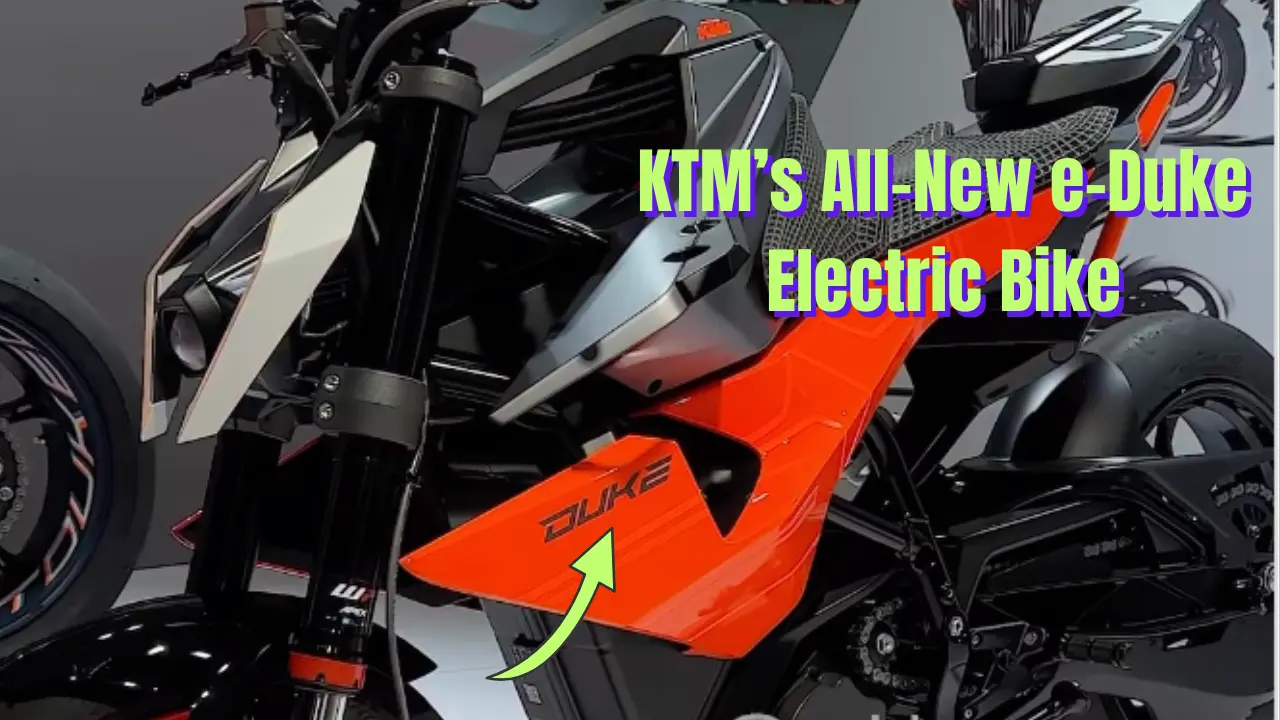KTM has unveiled its highly-anticipated e-Duke electric motorcycle during its Motohall exhibit in Austria, further stretching the Austrian brand into the electric territory. The prototype, which was first shown as a teaser during a Pierer Mobility investor presentation three years ago, demonstrates KTM’s dedication to electrification, despite the difficulties the company has been facing financially as of late.
Design and Platform
The ergonomics are typically aggressive but no more so than on a KTM 200 Duke. Based on the steel-trellis frame that underpins the existing 390 Duke, the electric prototype was enveloped in aggressively styled, sharp edges, with what KTM describes as “floating panels” and a see-through mesh seat (that looks like it’s 3D-printed, as is the KTM way) that is likely designed with weight saving in mind. The bike features a MotoGP-derived air dam that links up with the swingarm and fang-like LED DRLs for that unmistakable KTM bite.
Even more impressive in terms of practicality is the way KTM has shaped the seat to continue all the way to the front of the bike where typically the fuel tank is located — in other words one less potential need for tank grips. The firm has also added air scoops to guide cooling air to the battery pack.
Powertrain and Performance
Beneath the skin, that e-Duke sports a 10kW electric motor and a 5.5kWh battery as once used by the Husqvarna E-Pilen concept. The motor is mounted in the same place as a conventional 390 Duke would sport its engine, and is running a chain-drive system, instead of the belt drive, so it is meant to be easier to service in Indian conditions.
Read Also: 2025 KTM RC 200 Gets Modern TFT Display, Enhanced Controls, and Fresh Paint
As far as the performance goes, the e-Duke is likely to have something equivalent to a 150cc petrol motorcycle with the typical electric motor torque. The promised distance per charge seems to be around 100-150 km, which, to be honest with you, isn’t anything revolutionary, but I guess it’s good enough if you plan on using it to commute, or for city runs.
Features and Hardware
The e-Duke features are simpler and more basic TFT console than that of the display units seen on other KTM bikes. But one cool feature spotted in the reveal video is the built-in charging cable, which makes it seem like riders won’t need to carry around a separate charger.
Motorcycle Sport suspension responsibilities on the bike are handled by an adjustable WP Apex inverted fork and an offset monoshock. It rides on 17-inch alloys with discs all round – in effect, the tried-and-tested kit from the 390 Duke.
Launch Timeline and Pricing
And this is where this becomes interesting for Indian buyers. The provisionally named e-Duke is likely to hit the tarmac around March 2026 and is expected to be priced around ₹2.5 lakh (ex-showroom). Since the 390 Duke is also produced at Bajaj’s plant in Chakan and since the e-Duke is based on the 390 platform, the electric motorcycle could be a made-in-India product as well, helping with competitive pricing.
Market Positioning
The e-Duke isn’t going to drive a stake in the heart of the Ultraviolette F77’s performance crown. Instead, it’s being pitched as a high-end electric competitor for 150cc petrol offerings such as Honda’s Unicorn or Yamaha’s FZ-S. That approach is reflected in the likes of Royal Enfields’ new Flying Flea C6, and aimed at the same riders jonesing for the brand heritage and style, while all they really want is an electric way of getting around.
For KTM and Bajaj, this is a chance to bookend the electric spectrum – a mass-market appeal with the Chetak scooter and more performance-focused riding with the e-Duke.
The prototype announcement is very timely news for KTM, which has been weathering financial difficulties. But if we’ve learned anything from the Austrian brand, it’s that they are not ones to shy away from making bold statements. The e-Duke could well be the electric adrenaline-shot KTM needs to remain pertinent in India’s fast-developing two-wheeler world.
